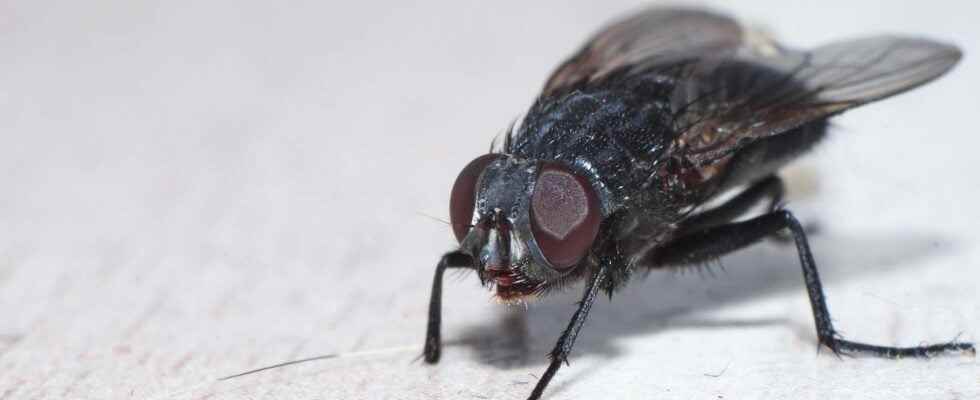“Bêtes de science” is like a collection of stories. Beautiful stories that tell the living in all its freshness. But also in all its complexity. A parenthesis to marvel at the treasures of the world. For this new episode, we are going to focus on a very common insect: the fly.
You will also be interested
[EN VIDÉO] Threatened fly spins like a fighter plane Flies use the same techniques as fighter planes to avoid predators. Demonstration with this video made with high speed cameras.
The flies. Usually, they annoy us going around in circles in our kitchens or living rooms. The temptation is then great to grab a fag and get it over with. But let’s take a deep breath and take the time today to try to understand them. Because if they adopt what seems to us to be a most exasperating habit, it is in reality quite simply … for love! While waiting for a female to feel concerned, a male can indeed walk in circles for hours. His way of making himself interesting …
It still looks a bit like more proof that the flies are not very smart. It must be said that with a brain the size of a poppy seed and no more than 100,000 neurons, they are not helped. However, scientists are categorical: these little insects are capable of remembering and therefore of learning. Flies can, for example, distinguish dangerous places from safe places.
Their brain, however small it may be, is for example able to calculate their direction of movement even though their head and their body do not point in the same direction. What ? Yes, when you walk in the street while turning your head towards the one accompanying you. It’s what your brain does, too. Flies have very few friends, but it can still happen to them. When they flap their wings to move forward, but a strong enough wind pushes them back, for example.
Flies and vector calculus
When you close the eyes, you also remain able to know where in a room you are and in which direction you are “looking”, thanks to the cells that scientists call the direction cells of the head. Well, it’s kind of the same with flies. They hide in their little brain, cells that indicate the angle at which their head is pointing. A bit like the needle on a compass pointing north.
But there are also other cells there that indicate in which direction the flies are moving. Regardless of which way their head is turned. The researchers even show that, in the brain of flies, four classes of neurons are sensitive to movement visual. Enough to break down the movement of these small insects along the three axes of space. And add a component of speed. A bit like a student in physical would break down the trajectory of an object of study.
Thus the brain of flies seems capable of quite complex calculations. Kinds of vector operations. Thanks to neurons which translate information into waves whose height, for example, would be the analogue of the length of a vector. It remains to elucidate how these funny insects manage to keep track of their past trajectories. How their brains integrate signals related to the direction and speed of their movement over time to form memories. But one thing is now certain, flies … are not so stupid!
Interested in what you just read?
.
fs11
